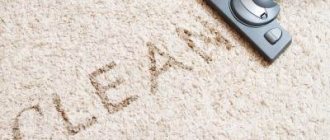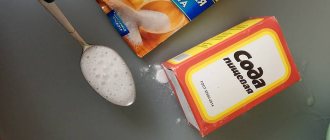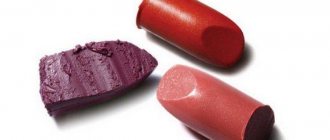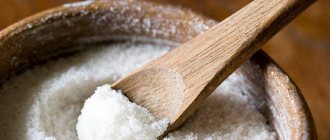How to clean sewer pipes without calling a plumber? We will tell you about the most effective methods when nothing else helps. There are several effective ways: mechanical, chemical, and also using improvised means.
Autonomous sewerage in a private house, if organized according to all the rules, is extremely convenient. But on the other hand, it requires constant attention from the owners. There is no one to blame for the ineffective operation of this system - everything is “in the hands” of the home owners. And carrying out preventive measures or even repair and restoration work is also their responsibility. So it is necessary, at least, to understand what could cause problems with the drainage of wastewater from the house, and to be able to take measures to restore the system’s functionality.
How to clean sewer pipes in a private house
A frequently encountered disadvantage of an autonomous sewer system that discharges household wastewater is the occurrence of blockages, as a result of which its normal functioning is disrupted. If signs of such a problem appear, it is necessary to quickly take measures to avoid its progression, which often ends in complete damage to communications. In a word, every owner should know how to clean sewer pipes in a private home, and be able to do it in practice.
Signs and causes of clogged drains
Problems with obstructed sewer pipes are caused by various reasons. This can be limescale solid deposits, accumulation of fatty deposits, blockage with organic and inorganic contaminants, as well as foreign objects entering the pipe channel.
To prevent massive accumulation of dirt and the appearance of a traffic jam, which will be difficult to deal with, it is necessary to pay attention to the primary signs that indicate insufficient permeability of sewer pipes:
- The appearance of an unpleasant odor from the drain holes in the sink or bathtub.
- Reducing the rate of water flow into the sewer or even stagnation of water.
- When you flush the toilet, its level rises higher than usual.
Any of these signs is a “wake-up call” that requires owners to take adequate measures.
So, autonomous sewer pipes can become clogged for the following reasons:
An example of sewerage clogging with fatty deposits mixed with food waste.
- Accumulation of fatty deposits on the inner walls of the pipeline, on which food waste is retained, gradually forming a plug. In this case, an unpleasant odor may appear from the drain hole in the kitchen.
- Formation of solid sediments on the internal surfaces of the pipeline resulting from the discharge of organic and inorganic waste into the sewer system.
- Soapy water from washing hands in the bathroom and dishes in the kitchen, as well as rinse aid from the washing machine. Soap, along with food waste, can also settle on the walls of pipes, gradually forming a plug.
- If hair gets into the drain and lingers on the mud layer of the pipes, it forms a serious blockage. You can get rid of it only using chemical compounds or mechanical cleaning methods.
- An improperly designed autonomous sewer system can become clogged quite often, and cleaning it will only be a temporary measure. In this case, in order to get rid of constant inconveniences, you will have to identify errors and correct the laid highway. First of all, this concerns the correct angle of inclination of the pipes.
Stagnation of water (which, according to all rules, should not exist) often leads to such lime deposits, narrowing the channel, and making a traffic jam even more likely.
- Hard water causes limescale deposits to form on pipes. Such growths are often impossible to remove, and therefore it is necessary to replace the sewer pipes completely. And all because of unacceptable stagnation of water in improperly assembled sewer sections.
- Disposal of large waste through the toilet. For example, pipes often become clogged after berries from compote, thick soups with coarsely chopped vegetables, as well as waste from peeling vegetables or fruits are flushed down the drain.
- Poor quality toilet paper or one that is not designed to be flushed down the drain can also cause a clog.
The roots of the plant damaged the integrity of the sewer pipe.
- There are also external reasons. Thus, the destruction of a sewer pipe can occur due to the growth of tree roots near it. In this case, it is no longer possible to do without a complete repair or even replacement of the pipeline.
Using a plunger
For simple sewer cleaning in a private house or in an apartment in a five-story building, it is recommended to buy a plumbing plunger. This is a simple handy device that gets rid of superficial local blockages. It can be used to break through plugs by creating high pressure in the pipeline. It causes the clog to move - to rise up or fall down.
Clean the drain with a plunger
How to quickly clean a drain using a plunger is described in the following instructions:
- If there is an overflow hole in the plumbing fixture, it is necessary to cover it with a rag or a special lid. This will help prevent low blood pressure.
- The bowl of the plunger must be lubricated with soap or petroleum jelly, which will ensure a tighter fit to the surface.
- The plunger is placed directly above the drain hole and the rubber part is pressed tightly against it. The device is filled with plain water. It should completely cover the rubber part, which will create the necessary pressure.
- The plunger is held vertically and more than 10 movements are made up and down.
- After performing the last operation, the device is sharply pulled out.
- If everything is done correctly, the blockage will be removed immediately. If the plug does not go away, all manipulations are repeated.
Methods for dealing with sewer pipe blockages
Judging by the recommendations of plumbers, in their practice, depending on the degree and cause of the blockage, the following methods have proven themselves to be positive:
Cleaning drains using a plunger and hot water.
- Boiling water, plunger and home remedies. This “folk” method of cleaning a sewer is suitable if the blockage is not yet significant, that is, it does not require much effort to remove it.
Using a granular chemical to dissolve clogs.
- Application of chemicals. Ready-made cleaning products contain caustic soda, so more complex stains can be removed as quickly as possible. The method is suitable for removing plugs caused by grease, soap, food waste, and hair getting into the drain. Special chemical compounds are capable of cleaning pipes and lime deposits to a certain extent, but not always.
Do-it-yourself mechanical sewer cleaning.
- Mechanical cleaning of sewer pipes is a rather complex process, for which various improvised and special devices are used. It allows you to eliminate blockages of varying degrees of complexity. Suitable if the cork has not yet hardened to the state of stone.
- Comprehensive cleaning. In this case, a mechanical method is used in combination with hot water and some chemical compounds. The method is applicable when the same blockages occur as in the previous case. Boiling water can enhance the effect of mechanical action on mud deposits.
Hydrodynamic cleaning of sewer pipes.
- Hydrodynamic cleaning. In this case, special equipment is used. The hydrodynamic cleaning installation supplies high-pressure water into the pipe to the cleaning probe head, which creates powerful jets with a special direction. Thanks to this effect, the blockage is overcome, the debris that created it is washed away with water right up to the very walls of the pipe, and the sewer system “breaks through.” This option, which usually requires calling a specialist, is suitable for eliminating the most serious contamination of pipes, including lime deposits.
Now about all these methods - in more detail.
Cleaning with a plunger and boiling water
The simplest method, which is usually used by owners first, is manual cleaning using boiling water and a plunger, as well as compounds that can be found in any kitchen. Without much exaggeration, such an approach can be called “first aid” in situations where the drainage system in the kitchen suddenly becomes clogged due to the accumulation of waste mixed with fat deposits in it, and it urgently needs to be cleaned. The same method is suitable if the blockage has not yet arisen, but an unpleasant odor emanates from the drain.
Using this cleaning method, in order to achieve the most positive effect, you should proceed in stages:
The siphon should be dismantled, thoroughly cleaned of any dirt accumulated in it, and then washed.
- The first thing to do is to disassemble, clean and rinse the siphon located under the washbasin, sink or bathtub, depending on the location of the blockage. The washing process can be carried out in a previously prepared container with soapy hot water. This will make further cleaning of the system more effective, since dirt deposits in the “elbow” will not interfere with the passage of hot solution through the pipes.
- Next, a clean “elbow” with a siphon is assembled and installed in place.
Boiling water very often helps to cope with local pollution
- After this, the prepared boiling water (preferably 8÷10 liters) is poured into the sink or bathtub drain. To achieve a stronger effect, you can add 200÷400 grams of soda to the water. The alkaline environment will specifically influence the resulting contaminants.
- To speed up the process of moving boiling water through a pipe, you need to use a regular plunger. With the help of hot water, a certain pressure can already be created inside the system, and the impact of this simple plumbing device will make it shock.
- The plunger is installed on the drain hole so as to prevent air from entering under its bowl. That is, it is necessary to create a kind of vacuum. The sink should be filled with hot water, about a third of its depth, so that the rubber bowl of the tool is in the liquid. If there is a water overflow hole on the sink or bathtub, then it should be plugged, otherwise the expected effect will not be achieved. Accordingly, if a kitchen sink has two bowls, the drains of which are combined in one siphon, then when working with one drain, the second one must also be tightly plugged.
Cleaning drains with a plunger.
- The plunger must be pressed firmly against the drain hole to prevent water from getting under its rubber part. If the liquid gradually leaves, then you need to find the best option for installing the bowl so that it is securely attached to the surface of the sink or bathtub.
- Next, jerking movements are performed, during which the suction cup of the plunger should not open from the surface of the container. The handle of the device may move slightly to the side and down. To obtain the required “punching” effect, it is necessary to make at least ten pushes.
Using a plunger can help get rid of minor blockages. But sometimes such cleaning even leads to an “exacerbation of the disease” - compaction of a blockage located somewhere deep in the pipe.
- Then the plunger is sharply separated from the surface so that the water begins to quickly flow into the drain. If the process of flushing water is active, and even accompanied by noise, this means that all procedures were successful. If there is no such effect, the procedure is repeated until the sewage system begins to operate normally.
But it also happens that the plunger not only has no effect, but after using it the drain becomes even worse. This means that the plug settled somewhere further along the sewer route, and the tremors created only compacted it. This means that we will have to resort to more radical methods.
Flushing the drain with boiling water and home remedies
When using this approach, six to eight liters of boiling water are first poured into the sewer pipe. This temperature effect will be the first stage in the dissolution of fat deposits, on which other contaminants are most often retained. After pouring boiling water, after 10-15 minutes you need to rinse the drain with hot water from the tap. If the water drains quickly, then the problem can be considered solved.
This method (using boiling water) is not suitable for breaking through a toilet bowl, since a sharp temperature change can cause its earthenware bowl to burst.
If simple boiling water, even in combination with a plunger, does not give the desired result, then after using it you can proceed to the next cleaning stage, which includes the following steps:
- In probably every kitchen you can find products such as vinegar, citric acid and soda - they can become the decisive component in cleaning pipes when using boiling water in the first stage.
Cleaning drains with baking soda and vinegar.
- You need to pour about 100 grams of soda into the sink drain hole, and then pour in the same amount of vinegar.
- The hole should be well closed for a couple of hours using a standard lid, or tightly plugged in another way. During this period, a reaction of two components will occur within the system.
Pouring boiling water into the drain after the “work” of soda and vinegar.
- After this time, six to eight liters of boiling water must be poured into the drain again.
- After this, the intensity of the drain is checked.
A good reaction inside the drain system will be given by pouring a pack of table soda into it, simply then pouring boiling water over it. Perhaps in some cases the effect of this combination will be even greater than that of soda and vinegar, since a large amount of hissing alkaline liquid will cover a significant part of the internal volume of the pipe.
Baking soda, vinegar, and hot water are often very successful in resolving clogged drains.
Citric acid and boiling water will also help in some cases to achieve the desired effect of cleaning pipes. In this case, you will need 200 grams of acid, which is diluted in a liter of boiling water and poured into the drain. The sink cannot be used for one and a half to two hours.
Even ordinary salt and hot water can help dissolve fatty deposits in the sewer. For this cleaning method, you need to take a pack of salt and a couple of liters of water. It is better to prepare a saline solution from these ingredients, which is poured into the sink drain.
Advantages and disadvantages of flushing
pros
- No need to purchase expensive chemicals
- Easily removes simple blockages
Minuses
- Long wait for effect
- Useless technique in case of severe blockage
In this case of serious blockage, it is worth trying other, more effective methods. For example, chemical, mechanical or hydrodynamic.
Check out the technology for cleaning storm drains yourself from our new article on our portal.
Mechanical cleaning
Tools for mechanical sewer cleaning can be different - the simplest is a manual plumbing cable, in a more effective version - a special electrified device with the same cable, but with special attachments in the form of a spiral, drill, loop, etc. However, the principle of operation of such device devices is the same, but the electrical device has greater capabilities.
A device for cleaning sewer pipes, equipped with different nozzles.
- Electric cleaning machines . This device is used in cases where other methods have not helped, or there is no desire to carry out the cleaning procedure yourself. To do this, call a master plumber who has similar equipment. He will quickly get the job done by using one or alternately several attachments installed on the end of the cable. In this case, the homeowner will not have to make any efforts, but will have to pay a considerable amount for the cleaning.
- A plumbing cable is a flexible metal device. There are several varieties.
— The simplest (rope) is just an ordinary steel cable with a handle at the end.
— A spring cable is a long, several meters long, twisted spring, hollow inside.
Manual method of cleaning sewer pipes
Both of these types, along with being cheap, have a lot of disadvantages.
— More advanced and efficient options are spring-rope cables, consisting of a twisted metal cable enclosed in a flexible “tube” also made of wire twisted into a spiral. Here, too, there can be two types - with a fixed core, or with a core that rotates inside the spring shell.
A high-quality spring rope plumbing cable is not only flexible, but also highly durable. Therefore, it is able to overcome the most serious obstacles in the form of traffic jams and sediments, and pass through turns in the sewer pipes of the system (where, by the way, blockages most often form).
Manual plumbing cable of spring-rope type with a movable core.
Expert opinion: Masalsky A.V.
Editor of the “construction” category on the Stroyday.ru portal. Specialist in engineering systems and drainage.
I recommend purchasing cables of a spring-rope design - they have greater elasticity, so they more effectively solve the problem of dense traffic jams. (By the way, a very useful purchase for those owners of private houses who think about the future).
Some experts practice attaching a plumbing cable of a spring-rope design with a movable core to an electric drill, which is set to low speed when performing work. This approach significantly speeds up the cleaning process, since the rotation of the working nozzle will more intensively cope with difficult-to-pass plugs.
Prices for plumbing cable
plumbing cable
But even by transmitting rotation using a regular standard cable handle, it is quite possible to achieve the expected results.
Cleaning sewer pipes using a plumbing cable through an open sewer pipe.
Work on manual sewer cleaning using a cable is carried out in the following order:
- Cleaning can be done through a pipe that was specially provided during the installation of the sewer system specifically for preventive maintenance, or through a pipe to which the sink drain is connected in the bathroom or kitchen.
- For ease of work, the cable must first be rolled into a skein.
- The end of the cable with the nozzle (if provided) is lowered and pushed into the sewer pipe.
- To achieve a greater cleaning effect, you should rotate the cable clockwise using the handle provided in the kit. While rotating, the nozzle will clean the inside of the pipe, separating debris from its walls.
Cleaning the cable from dirt.
- Periodically, the cable must be removed from the line, clearing it of trapped debris and dirt. When pulling it out, rotation must be done counterclockwise.
- This procedure must be repeated several times.
Thanks to such manipulations, you can quickly crush the debris that has collected in the plug, and then wash it off with a large amount of water running under pressure.
If you don’t have a plumbing cable at hand, and it’s also not possible to invite a specialist with a special tool, then you can use rigid and flexible steel wire with a cross-sectional diameter of 4÷5 mm. One end of the wire must be bent in a spiral, and the other in the form of a handle, that is, at a right angle. The length of the wire will depend on the length of the area being cleaned, plus one to one and a half meters.
If any foreign object gets into the sewer and you cannot push it all the way to the end of the pipe into the septic tank, you can try to get it out using the same rigid wire, but bending its edge into a hook. I must say that sometimes this can be done.
To avoid contamination of the premises and the spread of dirt from the sewer system throughout the house, it is important to observe the following precautions and preparations for work:
— For personal protection when cleaning the sewer system, you need to prepare rubber gloves, a respirator and clothing that you don’t mind ruining. You can use an apron made of waterproof material - it will protect well from dirt getting on your clothes.
Pulling a cable out of a sewer often turns into a very scary picture.
— Depending on the location of the blockage, it is recommended to first cover the bathroom or kitchen with plastic wrap so that the drains do not pollute the room when the cable is pulled out.
Important! For an autonomous sewer system, the wastewater from which is discharged into a septic tank, it is better to use a mechanical cleaning method rather than a chemical one. If caustic soda accumulates in the septic tank, then you can hopelessly destroy all the microflora necessary for wastewater treatment, and in the future you will face a big sanitary and hygienic problem.
Cleaning sewer pipes with chemicals
Chemicals for clearing blockages in the sewer system are effective and fast-acting cleaning methods, the use of which requires minimal physical effort. Such compositions are produced in the form of granules, liquid, gel or powder. The base most often used is caustic soda, which is a particularly dangerous chemical, so when using it is necessary to take the following precautions:
- Be sure to protect your hands with rubber gloves.
- It is important to follow the recommendations given by the manufacturer in the instructions.
- Avoid contact of the cleanser with your skin or eyes. You can protect your eyes by wearing regular glasses.
- After using the chemical, the sewer system is thoroughly flushed with a large volume of water released under high pressure.
Chemicals can be used not only to remove existing blockages, but also as preventive measures. Such measures will help keep the pipes clean and, quite possibly, will completely relieve the owners of the unpleasant processes of cleaning from difficult plugs and plaque accumulation.
Liquid solutions intended for cleaning pipes are usually simply poured into the drain hole.
Household chemical stores offer a very wide range of chemical compounds that are specifically designed for cleaning sewer pipes
Chemicals for cleaning sewer pipes.
The most popular chemical compositions include the well-known “Mole”, produced in dry and liquid form, “Domestes”, “Mr. Muscle”, “Sanfor”, “Turbo” and some other products.
Chemicals
Cleaning drains in a private home can be done using store-bought products. To remove persistent contaminants in the sewer system, experienced professionals recommend using:
- Mole. A domestically produced product containing caustic soda;
- Tiret. Suitable for pipes made of plastic, cast iron and other metals;
- Domestos. The product contains alkali, which helps clean pipes from plaque and blockages.
- Sodasan. Used to clean pipes from limescale.
Rating of sewer cleaning products - 2022
| Photo | Name | Rating | Price | |
| #1 | "Pipe Cleaning Mole" | ⭐ 3.25 / 5 10 — votes | More details | |
| #2 | "Tiret" | ⭐ 3.9 / 5 3 - votes | More details | |
| #3 | "Deboucher" | ⭐ 4.2 / 5 2 - votes | More details | |
| #4 | Chirton "Clean drains" | ⭐ 4.9 / 5 15 — votes | More details |
What would you choose or recommend?
Take the survey
The effect of different drugs on blockages is almost identical; they are designed to dissolve and break down hardened organic blockages. However, some of them act more effectively on pollution, others less effectively. Which one is better can only be found out by trying them in practice, or by looking at user reviews.
Using these tools is not at all difficult. They are simply poured or poured into a drain or sewer pipe and left for the period specified in the instructions for use. After this, rinse the system abundantly with running water.
"Pipe Cleaning Mole"
“Mole for cleaning pipes”
The most affordable domestic version of a sewer cleaning product. This drug is produced in the form of a solution or granules, which allows the user to choose the optimal form of application for each individual case. “Mole” has the strongest aggressive properties, thanks to which it copes well with serious fatty deposits on the walls of the pipeline.
However, given this quality, the drug should be used with a certain degree of caution, strictly adhering to the manufacturer’s recommendations, which should be studied when purchasing. On sale you can find solutions that act on blockages with different strengths - these are “Mole-turbo”, “Mole-active”, “Mole-professional”, etc. The compositions “active” and “professional” have the strongest corrosive effect.
Judging by customer reviews and their demand for this product, it really has all the qualities declared by the manufacturer.
"Tiret"
"Tiret"
The second most popular means for cleaning the drain pipeline. The drug is a product of a German manufacturer; it is manufactured in the form of a gel, packaged in containers of different sizes. “Tiret”, like “Mole”, is divided into stronger and “softer” cleaning options. The most powerful of them is “Tiret-professional”. This remedy is used for both preventive and radical restorative measures.
Deboucher
Inexpensive and effective product - Deboucher
An effective gel for removing light and severe blockages with potassium and sodium hydroxide, chlorine and active additives that accelerate the chemical reaction. According to the instructions, the gel should be poured for 1 hour, but in simple cases the product works much faster. It cleans no worse than popular products, but costs several times less.
pros
- high efficiency;
- affordable price;
- acceptable smell;
- convenient packaging;
- safe for plastic;
Minuses
- One fill requires almost half a bottle;
- contains chlorine, do not use in aluminum pipes;
- valid for an hour.
Chirton "Clean drains"
An effective product is Chirton “Clean Drains.”
A product based on caustic soda and sodium nitrate is bluish granules that react to contact with water. An effective and relatively safe product. There is a pungent odor, but it dissipates quickly. The action time is only 15 minutes.
Advantages and disadvantages of the product:
pros
- effective;
- One-time packaging, no need to store hazardous substances in the house;
- does not generate dust;
- inexpensive;
- no chlorine;
- fast-acting.
Minuses
- not available in all stores.
Prices for plungers
plunger
Once in the sewer, the gel quickly envelops the internal surfaces of the pipes and quickly begins to act on fatty, food and other contaminants. An important advantage of this composition is the gentle effect of the gel on the pipe material. Therefore, it can be used not only in relatively new pipelines, but also in systems that have been in operation for a long time.
"Tiret" has a fairly high cost, but despite this, it is in demand among consumers, which is confirmation of the quality of the product.
Hydrodynamic sewer cleaning
The hydrodynamic effect on mud deposits in pipes can be called a 100% option, which is capable of breaking through the most serious traffic jams.
This cleaning method uses a compressor unit that supplies water into the pipe system under high pressure, which acts with tight jets on the deposits that have arisen. In addition, the working end of the hose probe is equipped with different nozzles, which are selected depending on the nature of the blockage.
Cleaning sewer pipes using a hydrodynamic method.
Some of these attachments act as a kind of drill, which cuts into the plug and first makes a gap in it, and then completely removes the contamination. In addition to this, water under pressure is sprayed not only in front of the nozzle, but also through holes made on its sides, thereby creating a reactive force that pushes the probe through the sewer pipe. These backward-directed jets wash all the internal surfaces of the pipe almost completely clean. In addition to stationary nozzles, masters also have heads that rotate under the pressure of water, which, if necessary, enhance the washing effect.
Some of the types of nozzles used when cleaning sewer systems using hydrodynamic technology.
Such installations have proven themselves to be excellent in eliminating the most caked-on traffic jams of various natures. It can be especially difficult to remove blockages that are located far from the inlet to the system, but here too the hydrodynamic technique comes out the winner. The entire cleaning procedure takes literally 30–40 minutes, and during this time the functionality of the sewer system is completely restored.
This illustration clearly shows the action of a hydrodynamic head when flushing a sewer pipe.
A hydrodynamic installation for cleaning a sewer system is a drastic measure used in particularly difficult cases, as it requires the involvement of professionals with their equipment, which is far from cheap. But often this becomes the only possible solution.
But if it is not possible to contact such specialists, you can try to cope with the problem yourself. To do this, you need a rigid garden hose of small diameter, but it will not be possible to create the necessary pressure in it without a compressor. However, sometimes this method also works if the cork has not yet had time to harden. You can also alternate the effects with a plumbing cable and water pressure.
Using a special cable
Cleaning of sewer pipes in a cottage, country house or apartment can be done using a professional cable. With its help, you can break through the deepest blockages without causing harm to the system. The specified equipment can be used for cleaning both cast iron or steel and plastic pipes. The advantage of the method is that it can be used constantly and without the involvement of specialists in this field who are plumbers.
The cable for clearing blockages is a long steel wire in the form of a spring. There is a handle on one side for ease of use. At the other end of the cable there is a spiral, which serves to secure various additional tools - a scraper, a hook. They are designed specifically to help remove severe blockages.
Pipe cleaning cable
To effectively and easily restore the functioning of the sewer system using a cable, you must adhere to the following instructions:
- It is recommended to remove the siphon, which will make it easier to remove the blockage. The end of the cable is directed to the outlet of the pipe.
- They make rotational movements, trying to push the tool as far as possible. But you don't need to apply a lot of force, which could damage the system.
- When the blockage has been found, it is necessary to increase the intensity of the cable rotation. To do this, you can attach a regular drill to the handle. Gradually the instrument is removed.
- If the operation of the pipeline has resumed, you should turn on the hot water for a few minutes, gradually increasing the pressure.
Using a special cable
Basic preventive measures against blockages
Small blockages in the autonomous sewer system cannot be avoided, but they can be dealt with quite quickly and without resorting to complex measures. But in order to prevent serious traffic jams, it is necessary to follow some simple rules for the operation of plumbing fixtures and sewerage systems. All of them are simple and understandable, do not require much time and effort.
Such preventive measures include the following:
- It is mandatory to use filter meshes in sinks, and even better, in bathtubs too, that allow you to retain large and medium-sized particles of kitchen products and hair. It is much easier to remove and wash the catcher nets that collect debris than to carry out the labor-intensive and sometimes expensive process of cleaning the entire system.
Mesh filter for installation in the kitchen sink drain hole. This is one of the options - the simplest and cheapest plastic one will be enough.
- Do not drain oil remaining in the pan after frying into the sink. You must first fill the greasy dishes with hot water with detergent added to it, and only after the fat has dispersed a little can you rinse the pan with hot water, also with detergent.
- After washing greasy dishes, you should not immediately turn on cold water, especially in winter, as the grease will immediately solidify and remain on the inner walls of the pipe. Well, other small particles that fall into the drain will soon begin to stick to it. Such accumulations eventually form a plug, especially on socket joints, tees, and bends.
- Periodic preventive cleaning of the pipeline system using chemicals will also help avoid serious contamination. But, as already mentioned, this should not be abused, especially if the wastewater is treated in a septic tank.
- If an unpleasant odor appears from one of the drain holes, which indicates a blockage, you should immediately use one of the “mild” home cleaning products. If it doesn’t help, you can try “chemistry”.
- You should not throw even toilet paper into a toilet installed in an autonomous sewer system. And even more so - other objects or food residues that can block the passage in the pipe for normal drainage.
Prices for Tiret
Tiret
Use of professional equipment
If a blockage occurs in the private sector or in an apartment (due to the fault of a neighbor above or below) and cannot be eliminated with available means, it is advisable to resort to the use of special equipment to restore the water flow. You can purchase it yourself at a hardware store.
The pipe cleaning machine is a household pump. This device is powered from the electrical network. Additionally, the machine is equipped with a plastic hose with a diameter of 1 cm, which is covered with thread and inserted into a PVC casing. It has a fitting at one end and a nozzle at the other. A hose is inserted into a pipe that is clogged, and water is supplied under high pressure. Flushing the sewer is an effective method in the fight against traffic jams of varying complexity.
There are several types of similar pipe cleaning equipment:
- drum The production of such equipment is quite complex and labor-intensive, so it is not cheap. But such machines are capable of washing pipes of any diameter;
- manual A good choice for home use, since it is almost impossible not to clog the drain at least once;
- gasoline. The most expensive and efficient equipment. Used in water utilities and other organizations. Can be used for hydrodynamic blowing of external sewerage, which consists of large-diameter pipes.
For home use, you can purchase a machine called Karcher.
Karcher is one of the cleaning methods
It works effectively even in the hands of a non-professional, it cleans simple clogs well, and is quite powerful. To prevent difficulties during its use, it is recommended to watch a video that describes in detail the rules for operating the machine.
A pneumatic method can be used to remove blockages in the sewer system. It involves pumping air into the system under high pressure. In this case, equipment called a compressor is used.
Personal Safety Measures
If you have to clean the sewer yourself, you should not throw into the background personal safety when carrying out these activities. We must never forget that all processes are associated with a very aggressive environment. In which, in addition, various bacteria that can cause serious diseases develop very actively.
Therefore, you should follow some useful recommendations:
- Work should be carried out in high rubber gloves to avoid contact with the skin of chemicals, as some of them can cause toxic burns.
- You should protect your respiratory tract with a respirator, and not only from inhaling chemicals, but also sewer gases, and from getting dirt into the oral cavity.
- It is also recommended to protect your eyes by wearing at least regular glasses.
- All actions related to the preparation of solutions that use acids or alkalis must be carried out with special care. Even ordinary, “harmless” at first glance table vinegar or concentrated citric acid can turn out to be very unsafe.
- If chemicals come into contact with your skin or eyes, rinse them immediately with plenty of water.
- To avoid an emergency in the future, after cleaning the system with chemicals, the pipes must be thoroughly rinsed with running water so that the remaining detergents go into the collector along with the blockage.
Check out the types and installation of a grease trap for sewerage from our new article on our portal.
* * * * * * *
We hope that the publication will be useful. Having figured out what methods exist to bring an autonomous sewage system into working condition, you can choose the best option for a particular case.
In conclusion - a video in which its author shows another original way to deal with sewer blockages
Video: How to deal with a severe sewer clog yourself
Recommendations for cleaning plastic pipes
Cleaning plastic pipes should be done with extreme caution, since the material is quite susceptible to mechanical damage. It is worth knowing that the smooth surface of plastic pipes does not corrode. Also, surface contaminants do not adhere well to it. However, a blockage can still occur, because fat deposits, hair, and food debris gradually clog the water drain.
- For plastic pipes, you can use a plunger or household chemicals, which give excellent results.
Call a plumber
In cases where there is no time or desire to clean the pipes, or the blockage is very serious, which you cannot break through on your own, you can call a plumber .
It is possible to seek the help of a specialist both in case of blockages and, if necessary, to replace components, for example, a cracked siphon. If additional parts are used, they will have to be paid for separately.
You can find a plumber in your city via the Internet. On average, the cost of cleaning work will cost from 700 rubles. If the problem is serious, even affecting the riser, eliminating the blockage will cost more.
Identifying the problem area
To effectively clean pipes, you must first determine the area where the blockage has formed. In most cases, the plug is associated with a clogged siphon - a structural element that is located directly under the sink. In this case, the water may not drain away at all.
If wastewater is flowing slowly, the problem may be related to the drainage system itself. This can be judged when water does not drain immediately from several pieces of plumbing, for example, from a sink and a bathtub.
Having determined approximately the area that does not allow drains to escape, you can begin to break through the blockage. Before you begin global sewer cleaning, you should make sure that the problem is not a clogged siphon, which can be cleaned quite simply.
How to pump out water
When the sewer is clogged tightly, the water drained from the tank does not flow into it. She overflows the cup. To clean the system, the liquid must be scooped out.
If the toilet is clogged, take an empty plastic bottle from any detergent or shampoo. Scoop out the contents as follows:
- a plastic container is placed in the toilet with the neck down and squeezed;
- lower the neck into the water and gradually release the pressure;
- when the liquid completely fills the bottle, place a bucket under it;
- squeeze until all the water flows out.
This simple method allows you to remove water not only from the toilet bowl, but even from the siphon.
Prevention measures
In order to encounter the problem of blockages as rarely as possible, you should remember about preventive measures. These include:
- installing strainers on drain holes;
- periodically cleaning the drainage system using home or purchased products;
- high-quality installation of the sewerage system and plumbing fixtures;
- preventing garbage, cat litter, food debris, small toys, etc. from entering drains.











